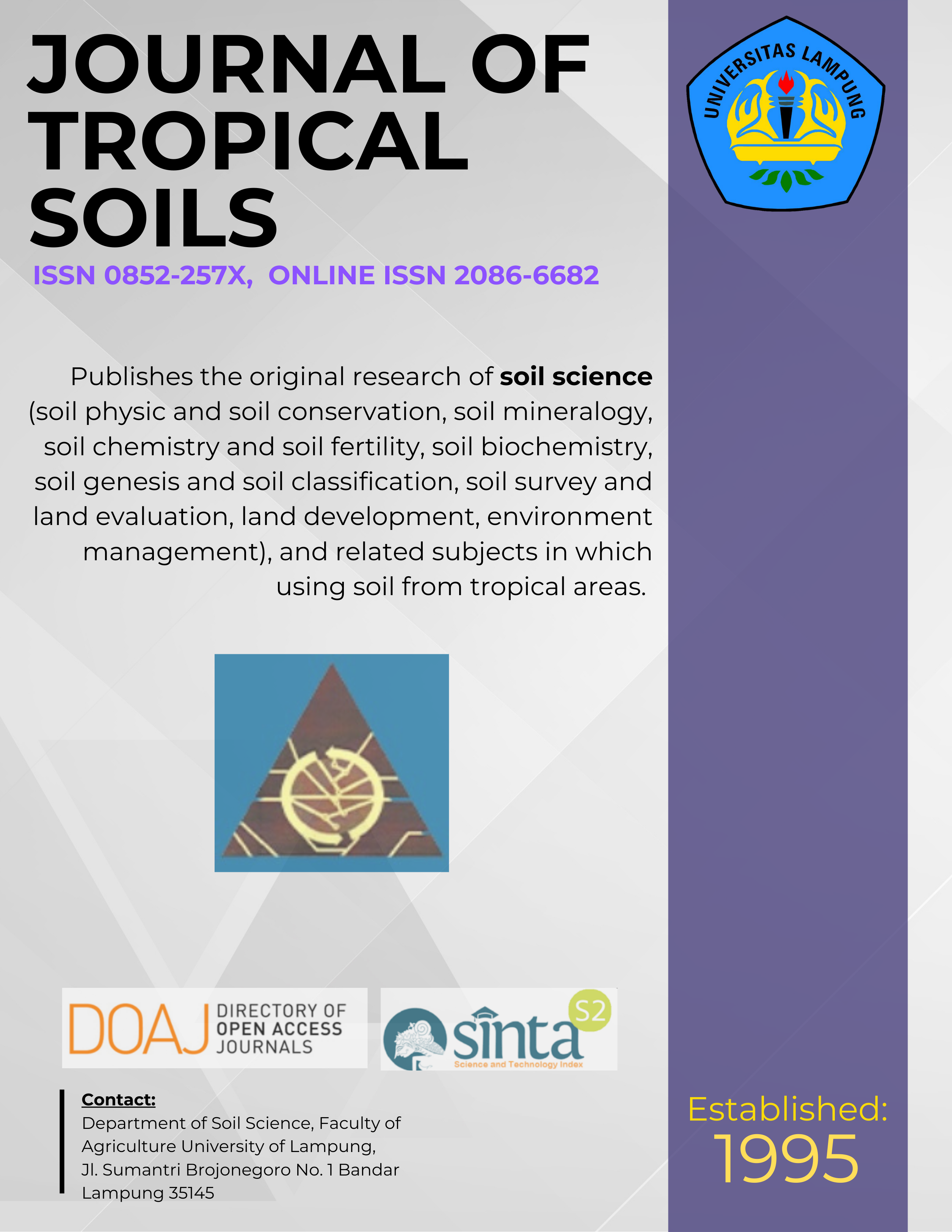Land Suitability Criteria for Intensively Managed Cavendish Banana Crop in Way Kambas East Lampung, Indonesia
Main Article Content
Abstract
Land Suitability Criteria for Intensively Managed Cavendish Banana Crop in Way Kambas East Lampung, Indonesia (Ansyori, Sudarsono, R Poerwanto, and Darmawan): Banana as one of the pre-eminent products of horticultural crop has a very important role in the growth of agricultural sector. The research aimed to study the land characteristics which influence the Cavendish banana crop yield and proposing the land suitability classification criteria for the land utilization type of Cavendish banana crop with intensive management which has been tested based on the production rate in the field. For this purpose, there were 36 observation land units specifically designed by considering factors such as soil subgroups, slopes, land utilization types, and land productivity levels. At each observation land unit, the land utilization types and land characteristics were indentified. The relation between land characteristics and production was tested with correlation and regression analysis. The results of some statistical tests were contrasted and then selected as the basis to develop the land suitability classification criteria for Cavendish banana crop which was intensively managed. The research findings indicated that the banana crop yield levels were significantly influenced and determined by the land characteristics of soil bulk density, cation exchange capacity, soil permeability, total porosity, exchangeable sodium percentage, soil textural class, and soil erodibility.
Downloads
Download data is not yet available.
Article Details
Issue
Section
Articles
License for Authors
Authors who publish with this journal agree to the following terms:
- Authors retain copyright and grant the journal right of first publication with the work simultaneously licensed under a Creative Commons Attribution License that allows others to share the work with an acknowledgement of the work's authorship and initial publication in this journal.
- Authors are able to enter into separate, additional contractual arrangements for the non-exclusive distribution of the journal's published version of the work (e.g., post it to an institutional repository or publish it in a book), with an acknowledgement of its initial publication in this journal.
- Authors are permitted and encouraged to post their work online (e.g., in institutional repositories or on their website) prior to and during the submission process, as it can lead to productive exchanges, as well as earlier and greater citation of published work (See The Effect of Open Access).
License for Regular Users
Other regular users who want to cite, distribute, remix, tweak, and build upon author’s works, even for commercial purposes, should acknowledge the work’s authorship and initial publication in this journal, licensed under a Creative Commons Attribution License.
How to Cite
Land Suitability Criteria for Intensively Managed Cavendish Banana Crop in Way Kambas East Lampung, Indonesia. (2018). JOURNAL OF TROPICAL SOILS, 15(2), 159-167. https://doi.org/10.5400/jts.2010.v15i2.159-167

